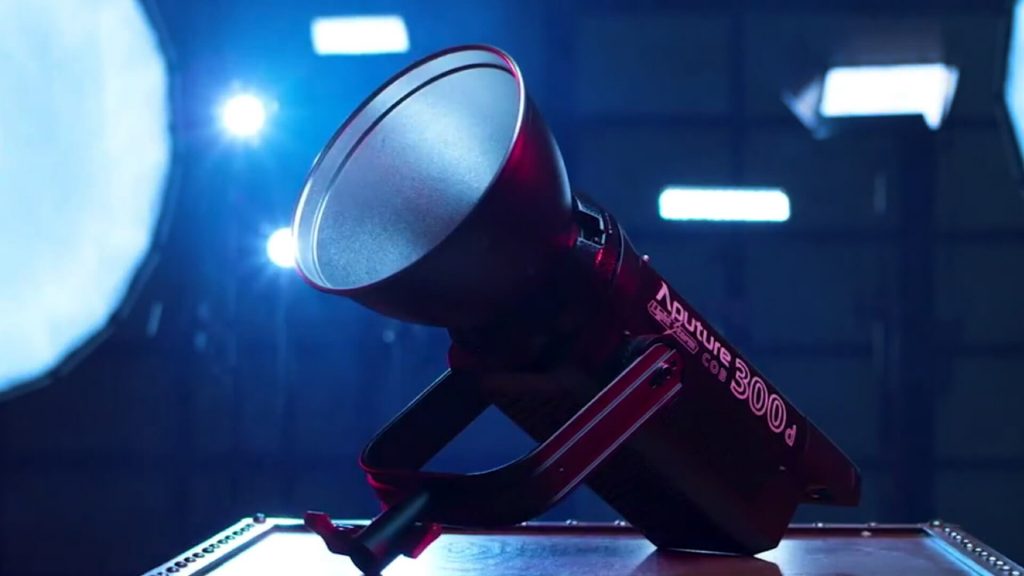To produce stylish and realistic-looking cinematic sequences, proper lighting methods must be used. Because of this, movie sets frequently have an excessive amount of lighting or are crammed with various light sources.
This intriguing post is brought to you by Film District Dubai, a leading Video Production Company in Dubai that specializes in camera rental, audiovisual rental, photo booth rental, and corporate video production.
This calls for technical expertise in cinematography, which entails selecting the best cinematic angles and sorts of film lighting approaches to precisely convey your message in every scene.
You’ll need to master some of the fundamental lighting methods and types of lighting used in filmmaking if you want to work as a cinematographer, director, writer, or any other creative member of a film team.
What exactly is cinematic lighting?
Cinematic lighting is cinema lighting that generates a sense and has a distinct aesthetic. It’s the lighting we see in movies, whether they’re high-budget or indie. While the word “cinematic lighting” is not an exact phrase and is very subjective, there are specific lighting techniques that often result in this aesthetic.
Your attention is drawn to the subject when your subject is slightly or significantly brighter than your background. Additionally, if the topic is a face, upstage lighting, or lighting from behind the subject, helps define the person’s face as the shadows fall in the direction of the camera. To achieve the desired tone and shot, you can use a variety of cinematic lighting techniques.
Photography lighting is quite similar to cinematography and film lighting. Since many of these methods are ambiguous, they can sometimes resemble a variety of different methods of cinema lighting. What important is that you become aware of each’s benefits and the best ways to apply them.
Many of these methods may be familiar to you, especially if you’ve previously engaged in studio photography, but it may be useful to understand how they can specifically assist filmmakers in establishing various moods and atmospheres in each scene.
What are the fundamental tenets of light?
Direction, intensity, and softness or hardness are the three guiding elements of lighting.
Intensity
The amount of light falling on any specific region of your scene is referred to as its intensity. The intensity can and often does fluctuate from one part of the picture to the next. On set, you’ll regularly hear that the ratio of one side of the face to the other should be 4-to-1. This means that the light should be four times brighter than the background.
Direction
In terms of the camera, direction describes the direction from which the light source or sources are coming. Backlight, top light, frontal, and profile are a few words frequently used to describe the direction of light. The overall lighting direction is frequently made up of several various light directions operating together. You can usually detect where the light is coming from if the light is strong enough.
Softness or hardness
The softness or hardness of the light is a more individualized characteristic than direction or intensity. To provide additional mystery and drama, hard light is frequently employed. When the drama is not nearly as dramatic or when a more organic appearance is desired, soft light is frequently employed.
12 Best Types of Lighting in Video Production, Ranked
Key Lighting
The principal film light of a scene or subject is also known as the key light. This implies that it is usually the brightest sort of light in any scene or photograph. Even if your lighting crew is attempting a complex multi-light arrangement, the key light is generally the first to be installed.
However, just because it’s your “primary” light doesn’t imply it needs to be facing your subject all of the time. To create a darker tone, you may set your main light wherever even from the side or behind your subject. Just keep it away from the camera or right next to it, since this will generate flat and direct lighting for your subject.
Fill Lighting
This method, as its name implies, is used to “fill in” and get rid of the murky, dark regions that your primary light generates. You may give your scene additional depth by placing it in the opposite direction of the dominant light and at a considerably lower intensity.
Fill lighting should be positioned somewhat farther and/or diffused using a reflector (located approximately 3/4 opposite to the primary light) to provide softer light that spreads out evenly because its goal is to remove shadows. The key and fill studio lighting are sufficient to impart observable depth and dimension to any object, and they work effectively in many scenarios.
Backlighting
A three-dimensional scene is produced using backlighting. Instead of merely lighting the top of the subject’s head in mid-shots, you should also light up their shoulders and the base of their neck. If you’re going for a silhouette, you can also utilize this approach by itself without the key and fill lighting.
To emphasize a subject’s silhouette, whether it be a person or an object, use a backlight. For more emphasis, backlighting produces a halo effect.
Read : Best Super Reminder Apps For Android!
Practical Lighting
The utilization of common, functional light sources, such as lamps, candles, or even the TV, is referred to as practical lighting. These are typically purposefully incorporated by the lighting team or set designer to provide a dramatic evening picture. They can occasionally be employed to provide soft illumination for your topic. However, since candles and lamps are sometimes insufficient to adequately illuminate a topic, practical illumination is not always simple to use.
When a performer or subject has to interact with a light source, use functional lighting. Use a bedroom lamp as an illustration since it must operate during the scene’s action.
Side Lighting
To illuminate your scene from the side, parallel to your subject, use side lighting. It is frequently utilized alone or in conjunction with a dim-fill light to add drama to your scene. Your side light should be bright to produce strong contrast and subdued illumination to truly achieve this look. It’s recommended to reduce the fill light’s intensity to 1/8 of that of the side light when utilized with one.
The borders or textures in a scene are highlighted by side lighting. A site has a stronger sense of depth when side lighting is used. By emphasizing the distance between them, it might make subjects appear farther away.
Bounce Lighting
Bounce lighting produces even, soft illumination that is more diffuse since it bounces light off the ceiling. When you bounce light, you use a reflector or another light-colored surface to direct light from a powerful light source toward your subject or scene. Bounce light is a wonderful option when you need additional ambient light across the entire space.
Hard Lighting
Direct sunlight or a compact, potent light source can provide harsh lighting. Although it’s often undesirable, it helps the movie. Hard lighting draws attention to variations in texture, form, and contour. To achieve a more dramatic effect, use strong lighting.
Soft Lighting
Although there is no specific lighting direction associated with soft light, it is nonetheless a method. Soft lighting is a technique used by cinematographers for both aesthetic and contextual purposes. Soft lighting may mimic natural outdoor lighting, produce drama, minimize harsh shadows, all of the above, and more.
High-key lighting
High key refers to a type of lighting that is employed to produce extremely brilliant scenes that appear to have no shadows. It initially gained popularity in the 1930s and 1940s during the height of classic Hollywood. For ethereal scenes or circumstances that call for excessive brightness, use high-key lighting.
Low-key Lighting
The opposite of high-key lighting is low-key lighting for a scene. The employment of shadows and how it engenders mystery, suspense, or drama are the main points of discussion. Low-key lighting can be employed for night-time scenes or somber sequences that call for a film noir aesthetic.
Ambient Lighting
The best technique to produce a well-lit scene that closely resembles or even exceeds what we see in real life is still to use artificial light sources. You may always film outside throughout the day to make use of the sun’s natural light. If you prefer soft lighting, photography outside is best done in the early morning, late afternoon, or early evening.
When you wish to illuminate your subjects without thinking about a particular style or quality of light, use ambient lighting. A reasonably ubiquitous light source known as ambient lighting uniformly lights whole areas or scenarios.
Motivated Lighting
Motivated lighting mimics a natural light source, such as the sun, moon, or night-time street lamps. If the director or cinematographer wants to adjust the intensity or coverage of the latter by utilizing a different light source, this is also the type of lighting that improves practical lights. In certain situations, filters, diffusers, and other modifiers are useful. When you wish to duplicate the light quality of a certain light source, use motivated lighting.
Conclusion
A successful movie/video production may depend on having a compelling plot, a skilled cast of performers, a competent crew, and stunning sets. But to make an impression on the audience, it must also have an appealing aesthetic appearance. For cinematic sequences to seem both stylish and realistic, proper lighting methods are crucial.
We hope you find this content useful. To keep up with current news and updates like these, follow Film District Dubai, a leading Corporate Video Production Company in Dubai that specializes in camera rental, audiovisual rental, photo booth rental, and corporate video production.






